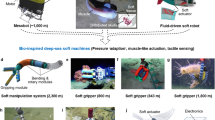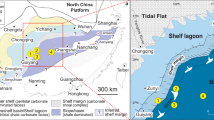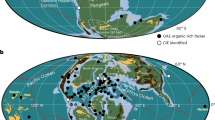Abstract
THE rapidly developing interest in deep ocean engineering makes it necessary to consider possible effects of deep ocean environments on the properties of engineering materials. The principal difference between a deep ocean environment and an environment just below the surface of an ocean is, of course, that in the former there exists a large hydrostatic pressure. It can easily be shown that if the depth from the surface, h, is measured in fathoms, the hydrostatic pressure, P, is given by:  This communication considers the changes in mechanical properties which might be expected to result from this hydrostatic pressure. We shall consider first reversible effects, that is, effects which should be observed only when a metal or alloy is stressed while submerged in a deep ocean, and, secondly, possible irreversible effects, that is, property changes which might be caused by deep submergence and persist after the metal or alloy has been removed from the deep ocean environment.
This communication considers the changes in mechanical properties which might be expected to result from this hydrostatic pressure. We shall consider first reversible effects, that is, effects which should be observed only when a metal or alloy is stressed while submerged in a deep ocean, and, secondly, possible irreversible effects, that is, property changes which might be caused by deep submergence and persist after the metal or alloy has been removed from the deep ocean environment.
This is a preview of subscription content, access via your institution
Access options
Subscribe to this journal
Receive 51 print issues and online access
$199.00 per year
only $3.90 per issue
Buy this article
- Purchase on SpringerLink
- Instant access to full article PDF
Prices may be subject to local taxes which are calculated during checkout
Similar content being viewed by others
References
Cottrell, A. H., Trans. Met. Soc. Amer. Inst. Metal. Eng., 212, 192 (1958).
Johnson, A. A., Phil. Mag., 7, 177 (1962).
Galli, J. R., and Gibbs, P., Acta Metal., 12, 775 (1965).
Pugh, H. Ll. D., Irreversible Effects of High Pressure and Temperature on Materials, 68 (Amer. Soc. Test. Mater., 1965).
Bullen, F. P., Henderson, F., Hutchinson, M. M., and Wain, H. L., Phil. Mag., 9, 285 (1964).
Bullen, F. P., Henderson, F., and Wain, H. L., Phil. Mag., 9, 803 (1964).
Author information
Authors and Affiliations
Rights and permissions
About this article
Cite this article
JOHNSON, A., D'ANTONIO, C. & MACIAG, R. Mechanical Behaviour of Metals in Deep Ocean Environments. Nature 210, 621–622 (1966). https://doi.org/10.1038/210621a0
Issue date:
DOI: https://doi.org/10.1038/210621a0



